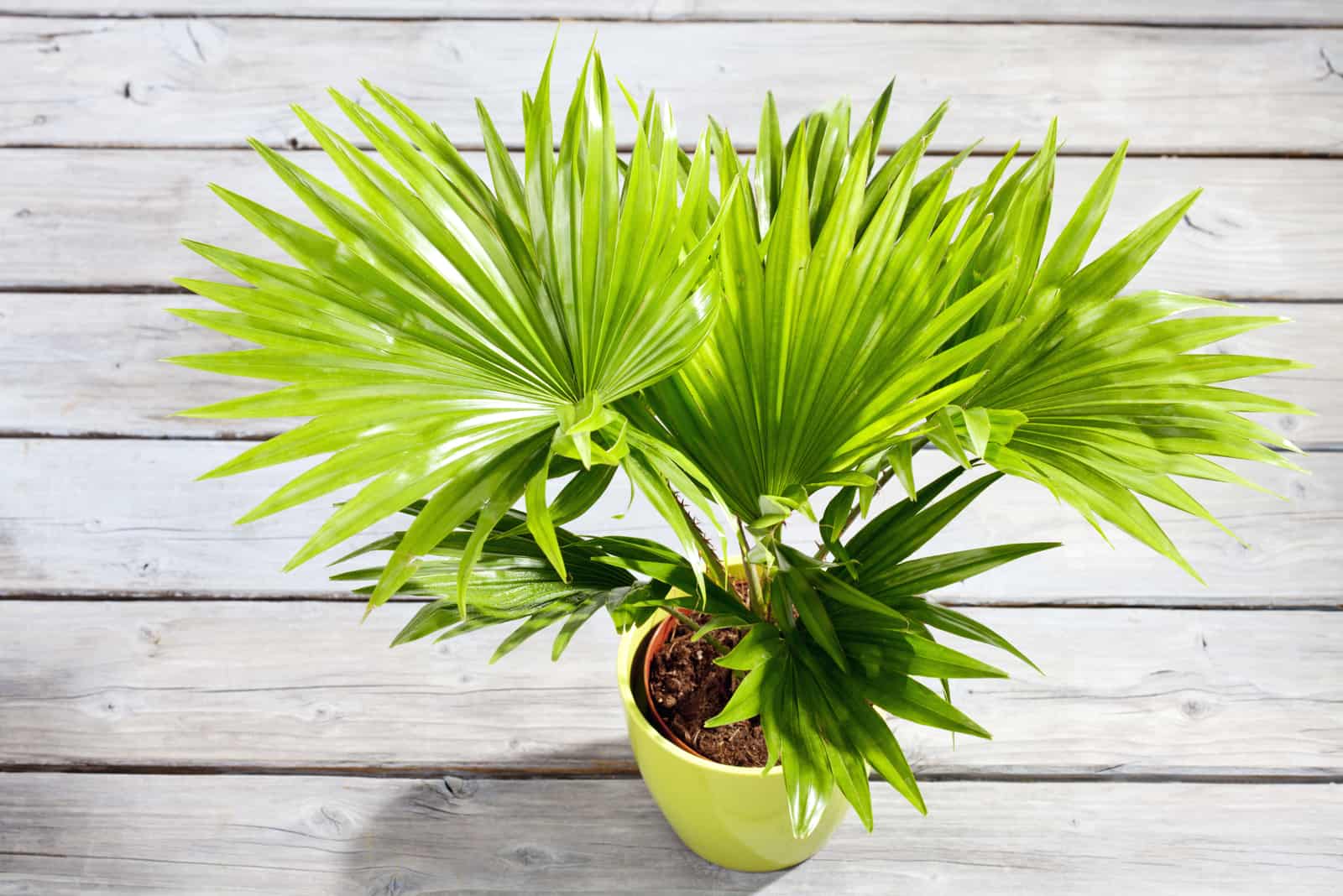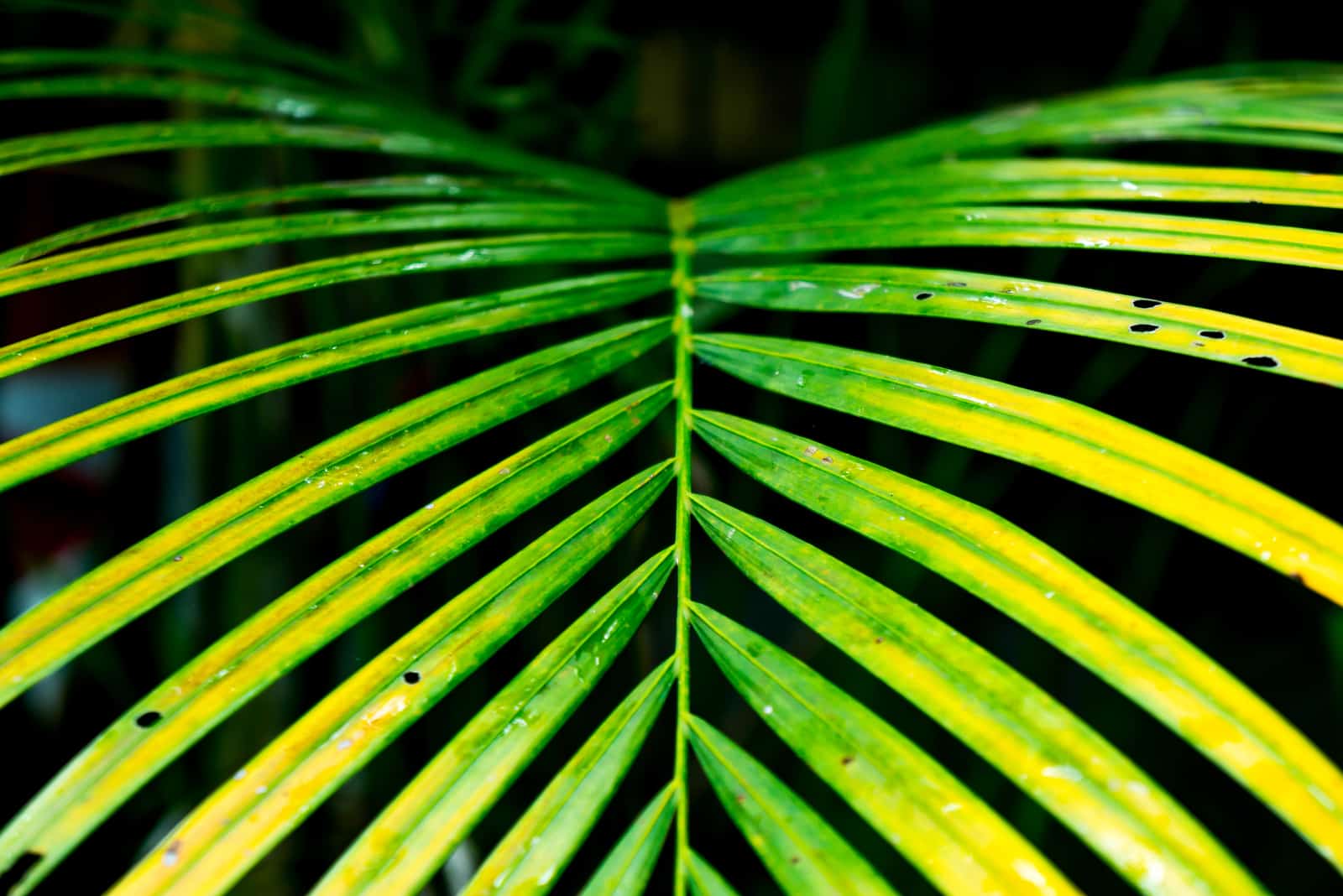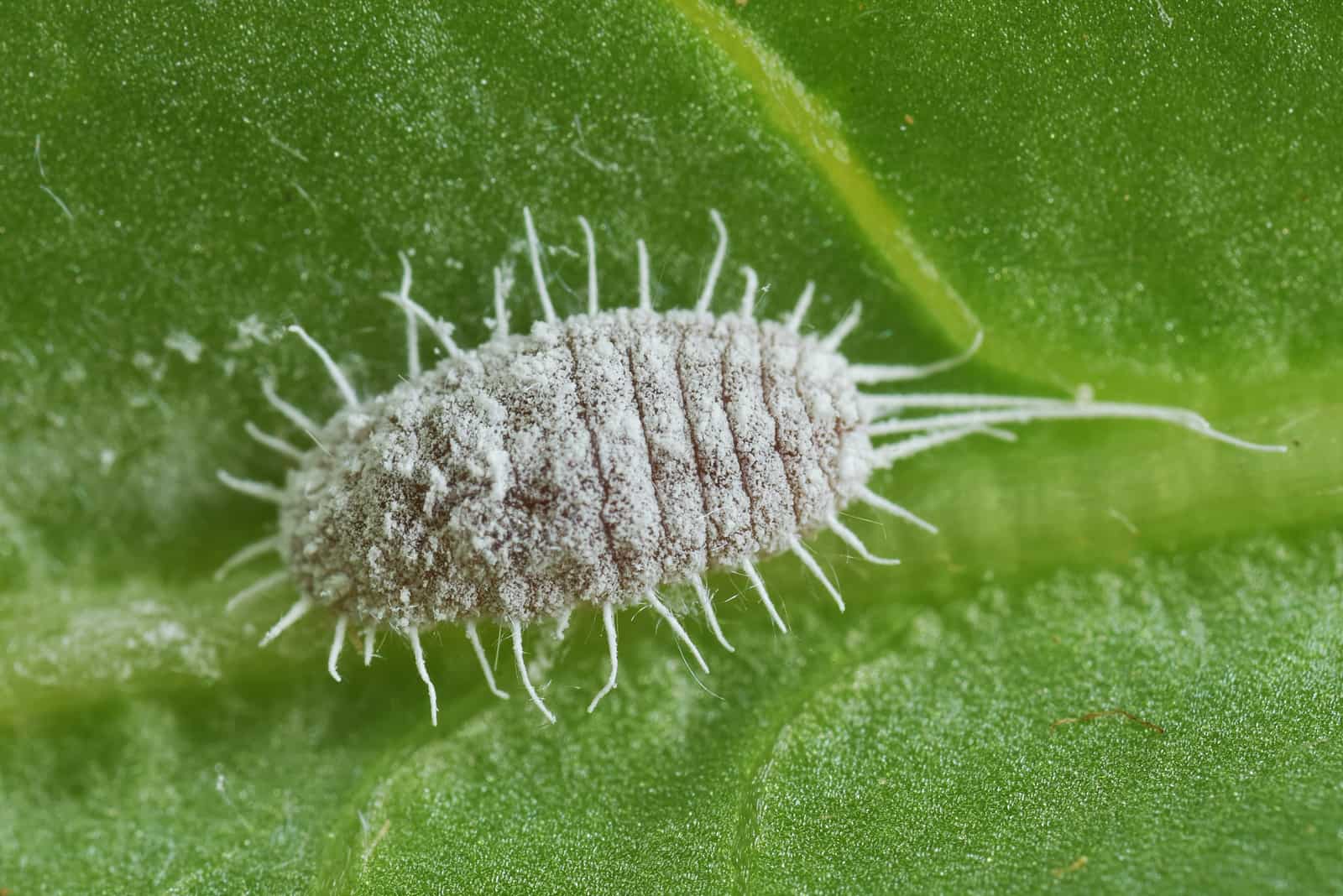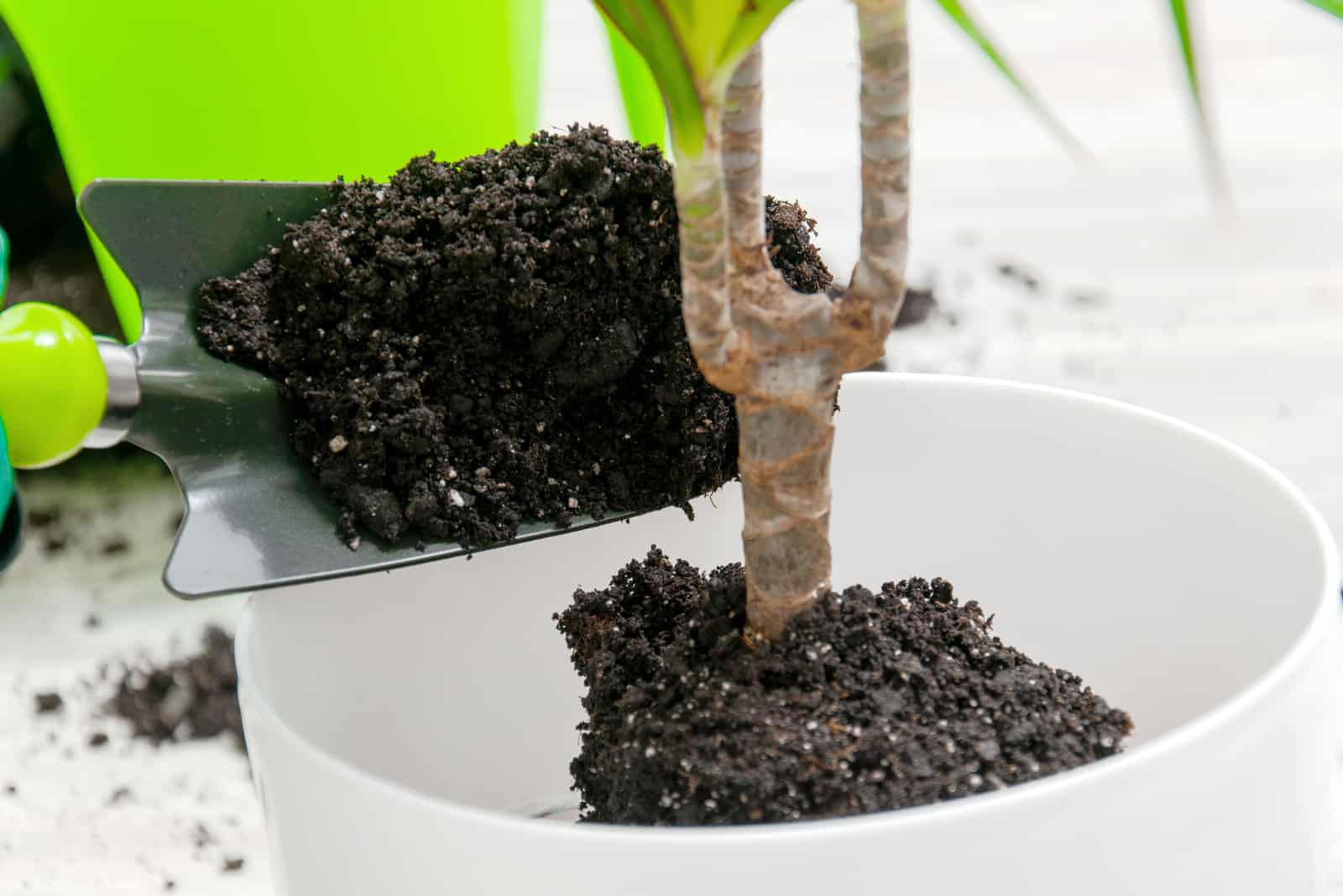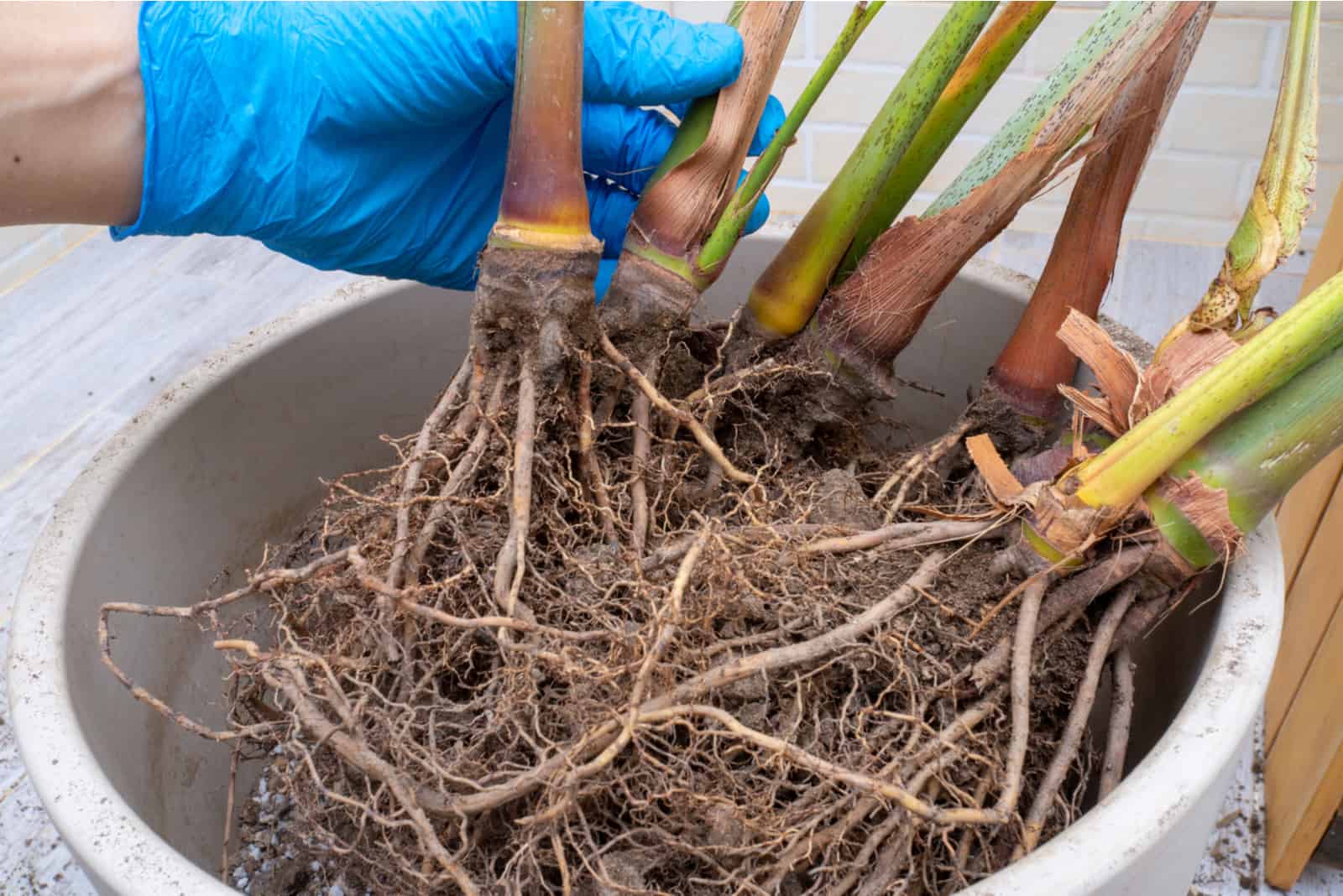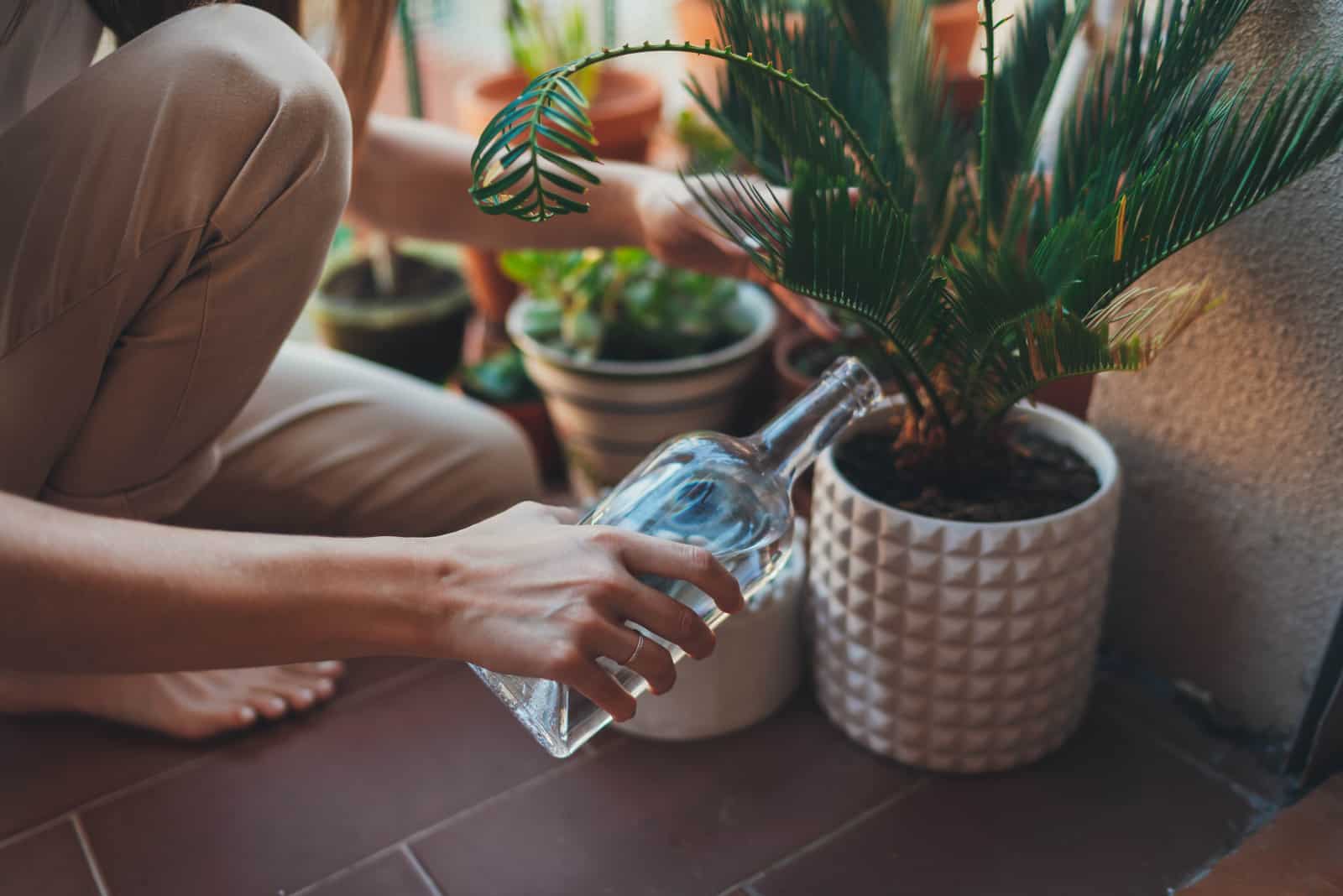A Palm tree, when grown as an indoor plant, will make an excellent addition to your home.
You can choose from beautiful varieties, among which kentia palms, majesty palms, and parlor palms stand out.
Palm trees are tropical or subtropical plants and, as such, need water. Still, an overwatered palm tree is susceptible to several complications.
Sure signs that you have an overwatered palm tree are pale, droopy leaves, root rot, leaves turning yellow, mold growth, pests, and highly wet soil.
Methods for saving an indoor palm tree include root rot removal, repotting, and using new potting soil.
Read on to discover the signs of overwatering and what you can do about it.
What Are The Signs Of An Overwatered Palm Tree
To determine whether you have an overwatered plant, you should scan it from the very bottom of the pot so you don’t miss anything. Check the pot, the root system, the leaves, and the plant’s soil.
Inspect these signs of overwatering so that you can move on to revival as soon as possible.
The Leaves Turning Yellow
Yellow leaves are another indicator that you’re overwatering your palm trees.
Its leaves are sensitive and overwatering causes nutrient deficiencies to the root system, which leads to the appearance of yellow palm tree leaves.
The discoloration of the leaves appears when they don’t get enough oxygen. Air circulation is disrupted due to the amount of water in the soil.
Poor drainage systems allow water retention in the soil much more than it should.
Although yellow leaves can also be a sign of underwatering, you should inspect the root system to get the correct diagnosis. If you notice root rot, you should adjust your watering accordingly.
Brown Tips/Brown Leaves
If your palm plant has brown leaves, don’t panic immediately. Some of the leaves turn brown as plants mature, and those leaves should just be removed.
But if you’ve noticed brown tips after the leaves turned yellow, you should check your watering schedule. Brown fronds may also occur.
Browning will spread to leaves, and they will eventually die.
Droopy Leaves
Plants need oxygen (fortunately, they produce more than they take). Excess water will disrupt the airflow in the root system, lowering the amount of oxygen the plant needs.
One thing is for sure: damaged roots = damaged leaves.
The palm tree canopy will lose its strength and eventually droop.
Pests
Like every other houseplant, a palm tree can be affected by pests.
Three types of pests can appear as a result of overwatering: mealybugs, fungus gnats, and whiteflies.
These pests enjoy high moisture levels, and overwatered palm trees will definitely attract them.
If you notice any cotton-like changes on your plant, it may be facing mealybugs. These bugs are tiny and white, and their presence on your plant is easily spotted.
Spider mites will cause the appearance of tiny spots on the undersides of the leaves that can be either white or brown.
Check for fungus gnats if you spot tiny black flies on the soil.
Mature fungus gnats won’t cause much trouble, but the larvae feed on roots and cause serious infections.
Root Rot
Although this sign may be the hardest to spot, there are ways to check it.
First, take a look at the leaves. If they are drooping or have brown spots, the root system needs further observation.
Another indicator of root rot is an unpleasant smell. If there’s an unpleasant smell coming from the soil, it’s likely the palm trees’ roots are in danger!
If you notice this sign of overwatering, you need to act immediately!
A healthy root system is fundamental because it directly affects the other parts of the plant.
Overwatering will cause soggy soil, so be sure to read up on everything you need to know about soil. Waterlogged soil will increase the plant’s susceptibility to diseases caused by pathogens.
One of the most common pathogens is fungi, which decomposes the root tissue.
You will have to stop the pathogens from spreading using the methods shown in the “How Do You Save An Overwatered Palm Tree?” section below.
Fungus will consume excess water and quickly spread across all the parts of the plant, starting with the root.
Moldy Soil
If you notice mold on top of the soil, your palm tree is overwatered.
Mold on top of the soil indicates the presence of fungi.
Overwatering is what causes the fungi to spread.
Air space in the soil can become clogged due to overwatering. When this happens, oxygen can’t get to the root system, which leads to mold on top.
If there are dead leaves on the soil, it’s essential to remove them as they make the soil more susceptible to mold.
This is also a sign of overwatering.
The plant needs well-draining and fresh soil. If the soil seems wet and takes too long to dry, you should check the soil moisture. Soil moisture can be measured with your finger, a wooden stick, or a moisture meter.
How To Check Soil Moisture
One way to check if the amount of water is the problem is to simply put your finger in the soil.
You can also use sticks made of wood. A clean stick means the soil is dry, and if the soil remains on the stick you have wet soil.
A more reliable way to check the moisture level is by using a moisture meter.
Wet soil will damage the root system and cause wilting.
Additionally, wet soil is a breeding ground for various pests.
Overwatering vs Underwatering
Sometimes it’s hard to tell if your plant is being overwatered or underwatered.
The water amount is a really tricky term for each plant.
Let’s look at the differences.
[table id=39 /]
How Do You Save An Overwatered Palm Tree?
Now that we have discussed the signs of an overwatered palm tree, let’s look at how to save your palm plant.
Remove Root Rot
If the root system shows symptoms of overwatering, here is what you can do:
1. Take the plant out of the pot. This will help you see any changes in the root balls.
2. Prepare pruners and sterilize them. If the roots are affected by fungi, you should use a fungicide.
3. Remove any root which looks unhealthy (root rot). Use sterilized pruners and prune the affected roots.
4. After removing the affected roots, wash the other roots thoroughly.
5. Let the roots and the soil dry.
Find A New Place For The Plant
I’m sure you placed your palm tree in the most aesthetically pleasing place possible for your home, but this may not provide the environment it needs for healthy growth.
First, check the light level and see if that’s causing any problems.
Direct sunlight can damage the palm trees’ leaves, cause sunburn, or dry out the soil.
Choose indirect sunlight instead.
If possible, move the plant to a room with a window to get more indirect light and fresh air (try to imitate its natural surroundings).
If a palm tree grows in a room with low light, its drainage system could be damaged.
Ensure it has enough light by moving the plant to a brighter and warmer place. Enough light will help the water drain effectively between each watering.
Repotting
Repotting is another way to save an overwatered palm tree.
Use a clean pot to avoid spreading the pathogens which cause root rot.
If you purchase a new one, it shouldn’t be much larger in size than the previous one or it could cause the roots to drown. If you are using the old pot, make sure it is well cleaned and disinfected before you use it again.
3 steps for ensuring the best conditions for the soil to dry:
1. Choose the right pot: the pot shouldn’t be too big, as if there is more soil around the root system than necessary the soil will retain excess water and become mushy.
2. Pay attention to drainage holes: all excess water must be drained from the soil to avoid root rot. This will prevent root rot and create a safe environment in which your palm tree can thrive.
3. Large pots need more soil, so watering needs to be adjusted as there is soil all around the root system. In other words, watering should occur less frequently.
Read on to see the entire watering process explained in great detail in the “What Is The Best Way To Water Palm Tree” section.
Air space in a soil’s potting mix should never be clogged with water. This will prevent oxygen from accessing the roots and destroy the entire system.
Old soil that has been contaminated should always be replaced with fresh soil to avoid further complications. Observe your plant to spot any changes and react in good time.
New Potting Soil
What is considered to be a good potting mix?
It should drain well and hold moisture. Peat moss, leaf mold, and shredded bark will work well as mulch for palm trees.
Buy a pot with drainage holes so that you can see if the water drainage system is good enough.
A water drainage system follows this pattern: the water gradually dries between each watering. The soil presents the signs it needs to be watered. A good water drainage system prevents the water from being retained in the soil, which would cause further damage.
Poor drainage systems can lead to many complications.
Propagation
This is the last thing you can do for your palm plant.
Follow these steps if you decide to propagate by stem cuttings in soil:
• Take the plant out of the pot and remove the soil so that you can clearly see the roots.
• Using a sterilized knife or pruners, cut off 4 to 6 stems with roots (make sure they are healthy).
• You can also dip the end of the stem cuttings in a rooting hormone to ensure better growth.
• Place the cutting in potting soil. Add sand to the soil to ensure better drainage and choose a pot with drainage holes. The cutting should be buried about half an inch into the soil.
• Water the potting mix and continue watering every day for about three months (deep watering).
• Don’t worry about overwatering during this period, as young palm trees enjoy misting.
• After some time the plant will develop some leaves, and when that happens it’s time to repot.
Here’s a video:
When new palms grow, stick to the usual watering schedule and follow the care tips from the sections above.
What Is The Best Way To Water Palm Trees?
Let’s first look at what should we pay attention to before watering:
• Always check the soil moisture (use finger, wooden stick, or moisture meter)
• Use the watering can you use for other houseplants (avoid sink, bathtub, or similar places where the danger of excess water is increased).
• Use distilled or filtered water to avoid chemicals and toxins that could harm your plant.
• Bear in mind that leaves should not be watered. You can either choose bottom watering or water over the top of the soil. Always water carefully or you risk either overwatering or underwatering.
• The temperature during winter is lower, so it’s essential to consider that it will need less water than during summer. Of course, you should always check the moisture level regardless.
• Don’t soak the entire plant. Water over the top of the soil instead until approximately two inches of the soil is dry, or alternatively apply bottom watering.
• Soak gradually, don’t pour the entire prepared amount of water all at once, let the soil soak properly.
• Use distilled or filtered water to avoid chemicals and toxins harming your plant.
What Kind Of Watering Schedule a Palm Tree Needs
Ensuring your plant gets enough water while trying not to overwater can be achieved by following a watering schedule.
A palm tree needs to be watered approximately twice a week during the growing season.
The best would be to water in the late afternoon.
If the plant is placed in a 10-gallon container, water it with 10 gallons of water.
Watering depends on a few conditions: light exposure, humidity, and temperature.
• Direct sunlight will make the plant more susceptible to dehydration, so water more often.
• Ensure higher humidity levels or mist the leaves.
• A perfect temperature for palm trees ranges from 40 to 50°F, and you should consider increasing watering when temperatures get higher. During cold winters, use a robust slow-release palm fertilizer.
Wrapping Up
It can be very frustrating to see something wrong with your palm tree plant, especially if you spent a long time caring for it.
There are many signs of an overwatered palm tree, and now that you know them you can identify which one your palm tree has and then try to fix it using the methods we provided in this article.
Until next time!
Like this post? Share of pin it for later!

